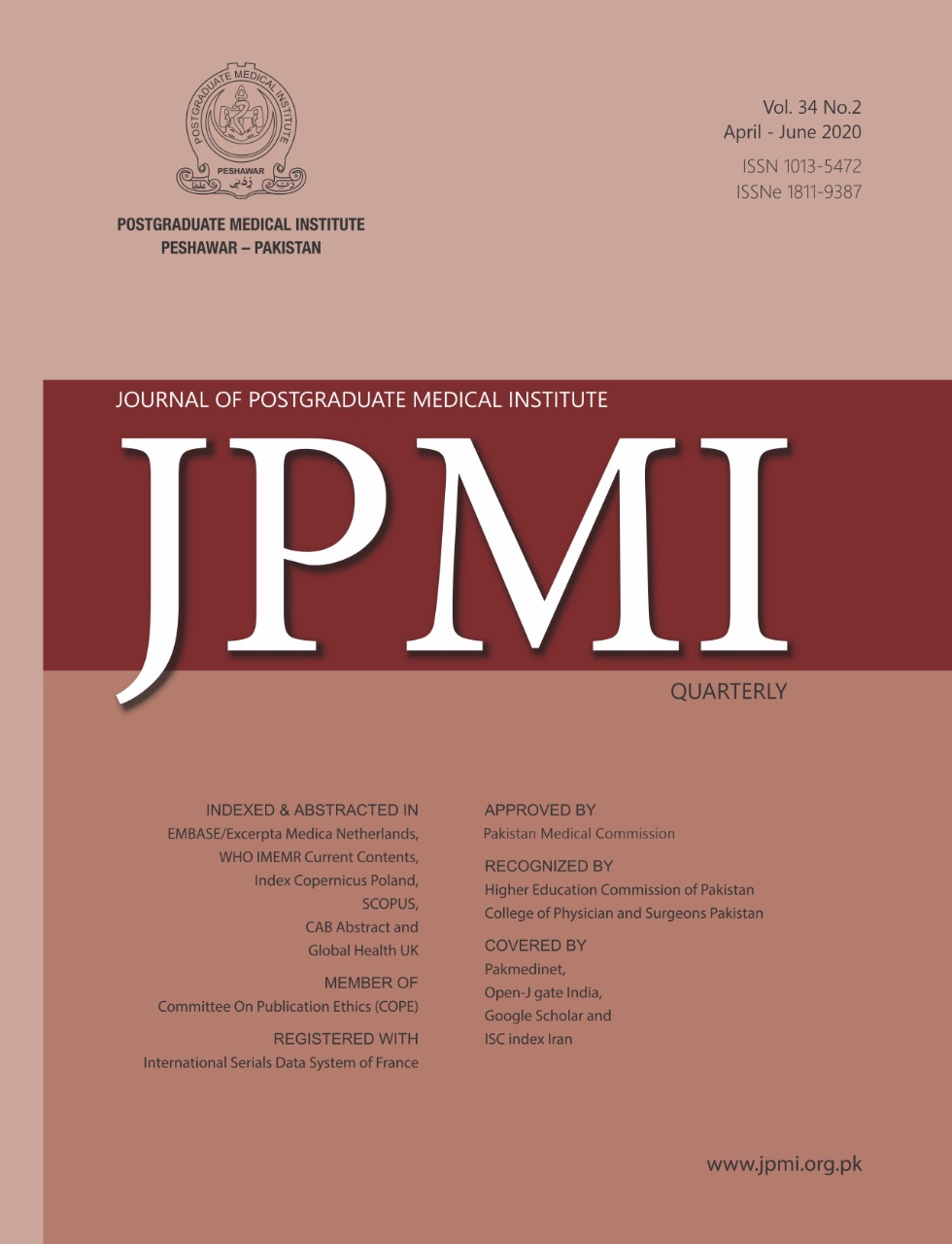EFFICACY AND SAFETY OF SHORT TERM USE OF 0.1% TAZROTINE GEL IN TREATMENT OF ACNE VULGARIS: A RANDOMIZED-VEHICLE CONTROL TRIAL
Main Article Content
Abstract
Objective: To assess the efficacy and safety of 0.1% tazarotene gel in treatment of mild to moderate acne vulgaris. Methodology: This randomized controlled trial was conducted in Dermatology unit, MTI Lady Reading Hospital (LRH), Peshawar from June to December 2019. Total 90 patients with mild to moderate acne vulgaris were included in the study. Patients were divided into three groups by lottery method. Group A patients received topical 0.1% tazarotene gel in morning and evening application. Group B patients received topical vehicle (plain gel) in morning and 0.1% tazarotene gel in evening while group C received vehicle (plain gel) in both morning and evening. Data was recorded in pre-designed proforma. The one-way analysis of variance (ANOVA) was used to determine statistical significance. Results: In group A, 19 patients showed 61-95 % decrease while 11 patients showed complete clearance of lesions after treatment with tazarotene gel for 12 weeks. In group B, 17 patients showed 61-95% decrease, 8 patients showed 41-60% decrease while 5 patients showed complete clearance of acne lesions. In group C, 22 patients showed less than 10% while 8 patients showed 10-20% decrease in the number of lesions. The difference was found significant with p-value of 0.000 between three groups in terms of reduction in the number of lesions at 12 weeks of treatment. Erythema, burning, peeling and itching were the main side effects Conclusion: Short term topical application of 0.1% tazarotene gel is safe and effective for the treatment of acne vulgaris.
Article Details
Work published in JPMI is licensed under a
Creative Commons Attribution-NonCommercial 2.0 Generic License.
Authors are permitted and encouraged to post their work online (e.g., in institutional repositories or on their website) prior to and during the submission process, as it can lead to productive exchanges, as well as earlier and greater citation of published work.


